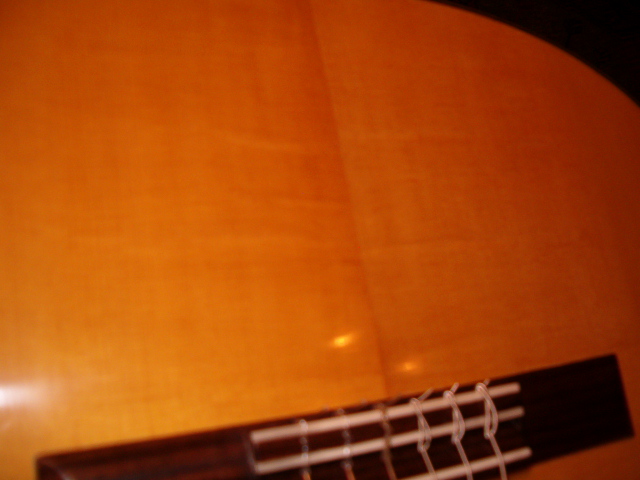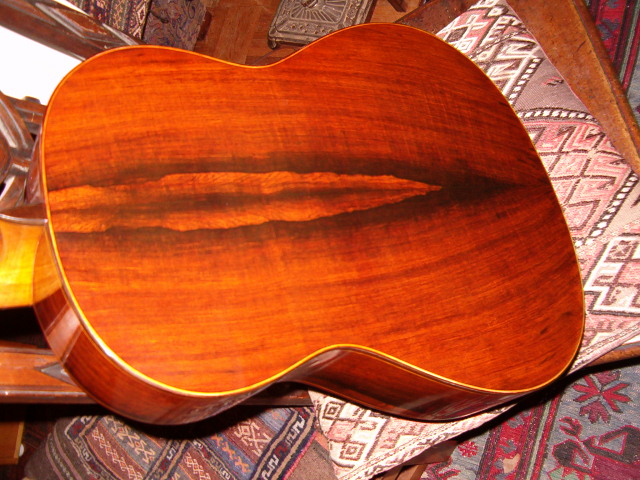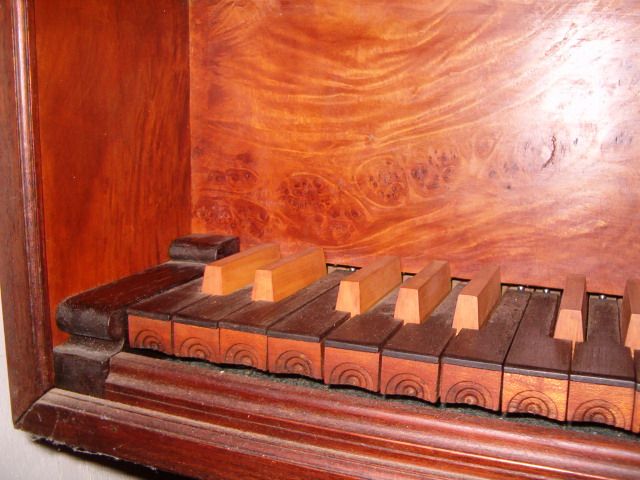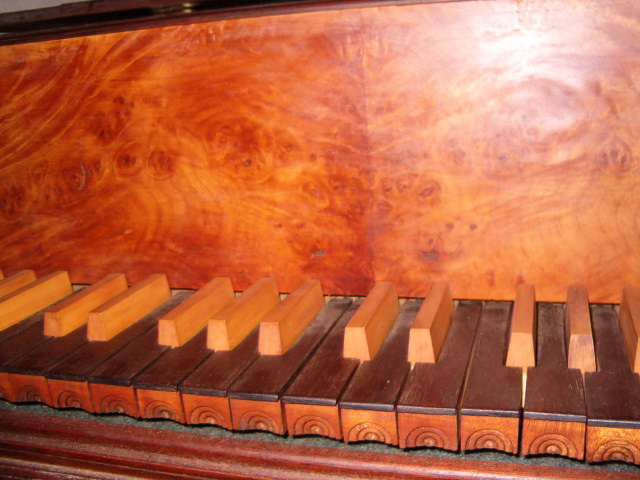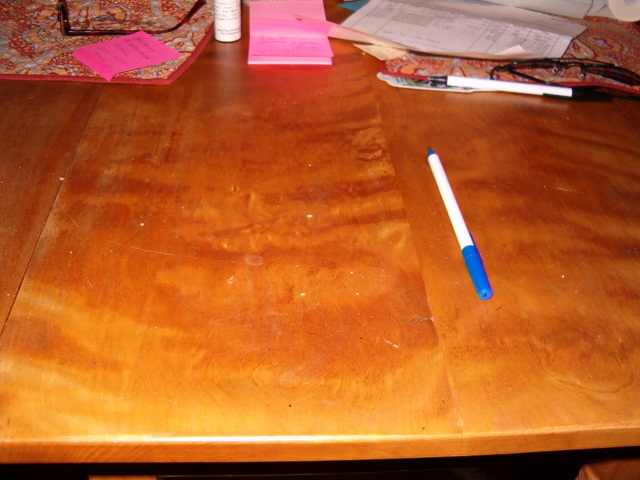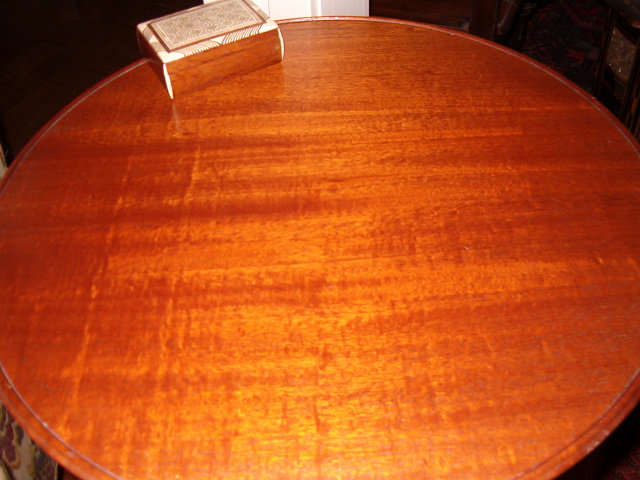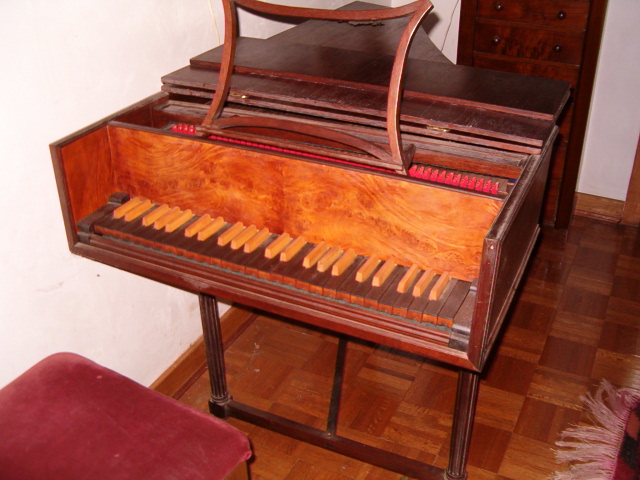|
a_arnold -> RE: The effect of "silk" on spruce (Castillo guitar) (May 18 2010 4:19:01)
|
quote:
Are talking about bear claw perhaps? a sudden change in in grain orientation then switching back to its former path. It changes the way the light reflects from the top?
I could be. I have seen three kinds of "silky" grain in woods:
(1a) the typical repeated semi-regular closely-spaced "ripples" that are common in curly maple (aka fiddleback maple). These can extend almost the width of the board perpendicular to the grain. Most common in maple, but I've seen it (less well-defined) in walnut, mahogany, and palo escrito, but in the latter 3 it is frequently associated with burl.
(1b) the same thing but widely and not so regularly spaced (several inches between ripples). The ripples look similar to what is seen in curly maple -- maybe 1 cm in width, extending perpendicular to the grain. This is what I see in this Castillo guitar, and I've only seen it in spruce.
(2) a short grain ripple with the same silky appearance, but isolated and scattered in the grain (that is, not repeated at regular intervals like in curly maple) and not extending across the grain very far, often having the appearance of a short hook or bear claw. I've only seen this in spruce. I think it is caused by proximity of the cut to small knots.
(3) a broad (as large as 12 inches to 2 feet in scale) area of silkiness that seems to make large areas of the wood glow. I've seen this in beech and mahogany, and to a limited extent in spruce and other straight-grained softwoods. Usually larger scale in beech. I'm not sure if this has a name. Silk seems appropriate but I'm not sure if that is what luthiers mean when they say silk. I suspect it is caused by proximity of quartersawn cut to the axis of a very large branch.
I've worked extensively with woods for 50 years, and have taken many trees from standing livestock to cabinetwork, but have only built one musical instrument with a soundboard (a harpsichord). So I'm only a wannabe luthier and not familiar with the terms you guys use. Although I did work for Scott O'dell at the Smithsonian in musical instrument restoration for 4 years, so I'm not completely unfamiliar with some aspects of luthiery.
From observation, I think (1a), (1b), and possibly (3) are caused by compressive stress put on one side of the tree as it is bent or distorted during life, commonly by leaning, or beneath the increasing weight of a growing branch. Almost like a carpet that gets bunched up when one end of it is pushed along the floor.
Maybe some of you guys can straighten me out on the terminology you use in luthiery to describe figure in woods?
|
|
|
|
